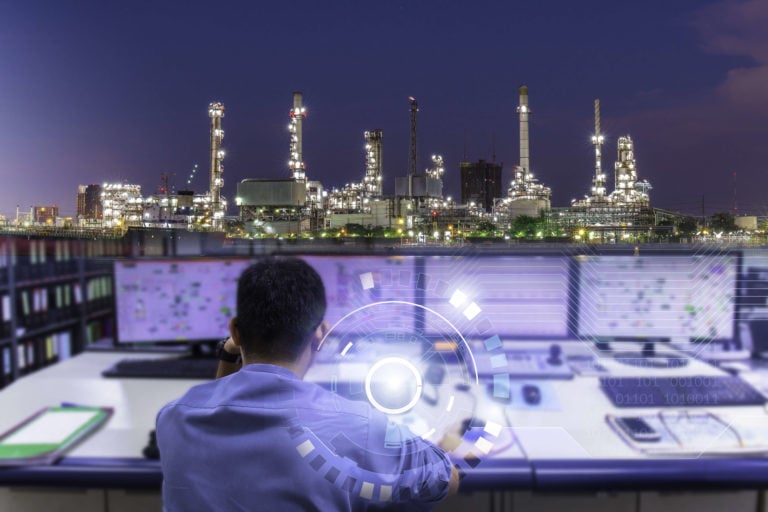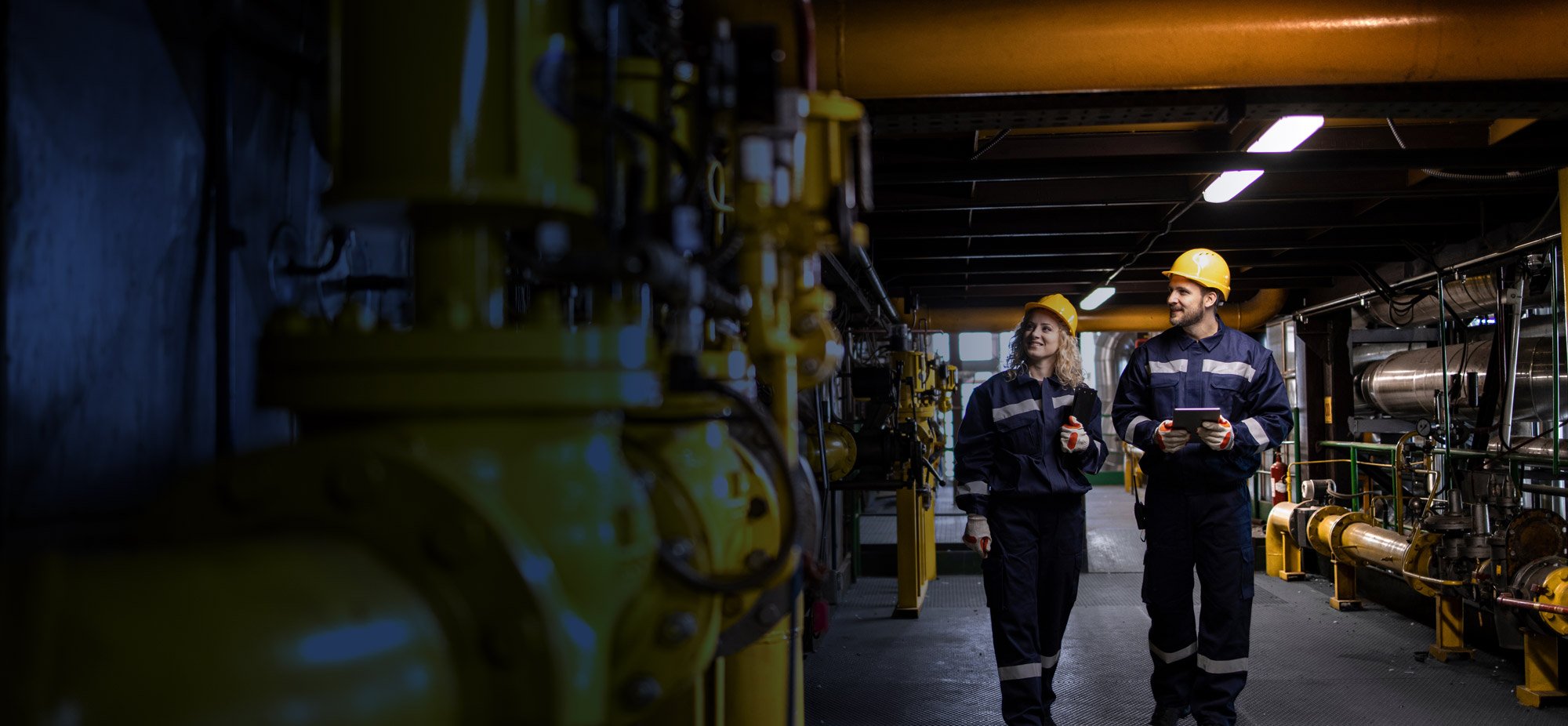How Industrial Autonomy is transforming process industries

Process manufacturers need to ensure high production levels while maintaining quality and cost-efficiency in a business landscape marked by instability, volatility, ambiguity, and uncertainty. Companies adopt emerging digital technologies to transform operations, control costs, minimize downtime, and boost profitability.
Digitization, also known as Digital Transformation, has many applications. It allows businesses to establish new production, operations, and distribution processes while reducing timelines and boosting efficiency.
From a business standpoint, advanced intellectual and cognitive techniques enable digitization initiatives that support efficient and agile reactions to dynamic production environments, product customization, and real-time self-optimization of manufacturing processes.
Digitization is at the heart of industrial autonomy. Layers of smart sensing and machine learning technologies integrate and allow process equipment to anticipate and adapt to unforeseen circumstances. Industrial autonomy will, in practice, allow equipment, machinery, businesses, and manufacturing systems to run self-sufficiently– reducing human intervention and freeing up personnel to work on other plant projects that drive long-term value.
Industrial autonomy vs. automation
Industry and business sectors have been working toward autonomous systems for many years. Rapid advancement in software tools, robotics, discrete production, and autonomous vehicles in mining and offshore/subsea activities are just a few examples that prove sustainable business value and ROI.
It is important to distinguish what we mean by “autonomy” versus “automation.” Autonomy is slightly different from automation. Automation performs a series of highly organized pre-programmed tasks but requires human intervention and control.
As with continuous steady-state operations, the sequence of tasks could take minutes, hours, or even longer to complete. Nonetheless, humans will perform some duties in-between these tasks. They are solely responsible for ensuring that the operation is completed safely, on time, and profitably. An operator, for example, might be in charge of safely starting up a unit or performing rudimentary switches or grade changes.
Autonomy goes beyond automation to include layers of machine cognition and smart sensing to predict and adapt to contingencies, eliminating operator intervention. Autonomous systems control all aspects of the task from startup to shutdown, ensuring safety along the way. We expect to see several mixed states or levels of autonomy soon, but plant personnel will need to work and engage with autonomous systems and process control. Responsibilities will change as personnel take on higher-value activities.
How automation Fuels autonomy
Industrial automation has dramatically benefited process industries and will continue to be beneficial even with industrial autonomy. Despite the slow pace of change, adoption promises to pick up rapidly as the advancement of enabling technologies, such as industrial software platforms, artificial intelligence (AI), machine learning, deep learning, cloud and edge computing, wireless sensors, and enhanced communications and networking become more widely available.
Human-like learning and adaptive skills will be included in assets and operations, allowing responses to situations within a secure, defined domain without the need for continual operator engagement.
Autonomy levels
As with autonomous cars, an industrial plant can have various levels of autonomy.
- Level 0 represents conventional control systems where a human operator oversees the plant’s operation manually.
- In Levels 1 and 2, the control system supports the operator with various activities, but the operator remains the principal controller, maintaining complete control over most safety-related functions.
- In Level 3, the plant uses sensors to monitor and control itself plus detect dynamic process situations. While we use predictive algorithms for safety and adaptive control, we still require human intervention in an emergency.
- In Level 4, the plant can drive itself but still notify the operator when it is safe to work in this mode.
- In Level 5, the plant is entirely autonomous, allowing the operator to focus on higher-order functions and tasks.
Autonomy will suffuse process plants in different functional areas. A few notable areas include planning and scheduling, process operations, field operations, engineering, and maintenance.
Field operations autonomy
Field operations autonomy at Levels 0 through 4 implies moving from low-level autonomy to mid-level autonomy, where humans carry out operations. The system recognizes and guides operators on what to do and how to complete the task.
But to gain more autonomy, manual tasks must be fully automated, and human intervention only required where necessary. As in a plant setting, Level 5 field operation autonomy means that systems operate self-sufficiently, allowing field personnel to focus on other value-add tasks that optimize the field’s long-term performance and profitability.
Pathways to Autonomy
Process industries are now closer to autonomy than they have ever been. Many operating companies are trying to achieve fully uncrewed remote operations, as is the case for very complicated, remote, or dangerous facilities, such as mining operations, hydraulic fracturing jobs, and offshore gas production platforms.
Reasons to prioritize autonomy include:
- Reducing operating costs while increasing production
- Improving sustainability by reducing harmful greenhouse gas emissions
- Making it safer and more attractive for people to operate onsite facilities
- Removing people from unsafe situations
- Enhancing management of dispersed assets with remote or scarce resources
Most of the processes that manufacturers use to achieve remote operations apply to autonomy. These include:
- Converting manually operated machinery to fully automated machinery
- Using procedural standardization to automate manual tasks like a machine or plant startup and shutdown
- Leveraging redundant and adaptable controls, communications, and key equipment
- Implementing smart sensors to enhance monitoring of both equipment and processes
- Conducting pilotless surveillance, remote monitoring, and inspection
- Performing regular robotic maintenance
- Using analytics, machine learning, and other AI techniques to enable predictive maintenance
- Using AI and other analytics to monitor processes for imminent abnormal situations continuously and initiate appropriate action
- Applying stringent modeling approaches to develop digital twins
Onboard industrial autonomy
Companies can onboard industrial autonomy by building greenfield autonomous plants. Another option is to use autonomous technologies, like the KICS platform, in existing facilities to enable cross-functional data integration and supervisory process control. Autonomous technologies may take the shape of an AI system learning to regulate process variables by opening and closing valves or combining procedural automation and AI to execute more sophisticated tasks.
Both higher-level functions and production processes can be made autonomous. Safety, margin optimization, performance, supply-chain management, compliance, and other manufacturing operations and tasks could benefit from autonomy beyond its typical controls and efficiency focus.
Autonomy vs. human intervention
As autonomous capabilities rapidly expand, there are many unanswered questions regarding the role of the human. It is essential to understand what it means to establish “meaningful human control.” There will always be a need for sufficient human oversight over autonomous agents in many complex industrial facilities.
Making routine jobs autonomous frees workers to perform other tasks requiring more hands-on human involvement. Also, it frees up workers to work on other projects that can drive greater efficiency and optimization in the plant/field. We’re not getting rid of workers; we’re putting them to better use.
Humans are vital to making critical, complex decisions that require a rational thought process. While industrial enterprises benefit from autonomous systems, it’s important to remember; machines are tools that essentially make processes more efficient. But some level of human intervention will always be in control.
Final thoughts
Market volatility, the global Covid-19 pandemic, and supply chain issues contribute to the rapid growth in process industries. These are just some of the drivers of industrial autonomy that make digital transformation inevitable.
The benefits of autonomy are abundantly clear: improved safety and reliability, productivity, profitability, efficiency, and flexibility. And by taking human error out of the equation, autonomy promises to mitigate risk by keeping field workers out of dangerous situations.
Much of the technology and data required to achieve autonomy are currently available. A large amount of the data comes from sensors in the control network or via wireless sensors. To process the data and add critical business intelligence, sensor technology combined with AI is widely accessible and easily deployed.
And while entirely self-sufficient plants are improbable in the short-to-mid term, it is reasonable to assume that many functions can and will be automated.
As technology, trust, and workforce dynamics develop and plant workers learn to work alongside autonomous systems, human interaction and decision-making will become more meaningful and vital, improving business value throughout the organization.
See how Kelvin technology plays a role in driving manufacturing efficiencies by turning control applications into meaningful insights and action.


